SVARThöna
Impressive
The Enigmatic Elegance
The Svarthöna, or Black Hen, has a rich history that reflects its significance in Swedish agriculture and culture.
Origins
The Svarthöna is believed to have ancient roots, with its lineage tracing back to the indigenous poultry of Sweden. This breed is part of a broader category of landrace chickens that have evolved in specific regions, adapting to local conditions and farming practices. The exact origins are somewhat unclear, but it is thought that the Svarthöna has been present in Sweden for several centuries.
Cultural Significance
The Svarthöna holds a special place in Swedish culture and folklore. Historically, it was valued not only for its meat and eggs but also for its role in local traditions. The breed is often associated with rural life and small-scale farming, making it an integral part of the Swedish agricultural landscape.
Adaptation and Resilience
As a landrace breed, the Svarthöna has adapted to the local Swedish climate and farming systems. This adaptability has allowed it to thrive in diverse conditions, contributing to its resilience against diseases and environmental challenges. Farmers have appreciated its ability to produce well even in less-than-ideal conditions.
Breeding Practices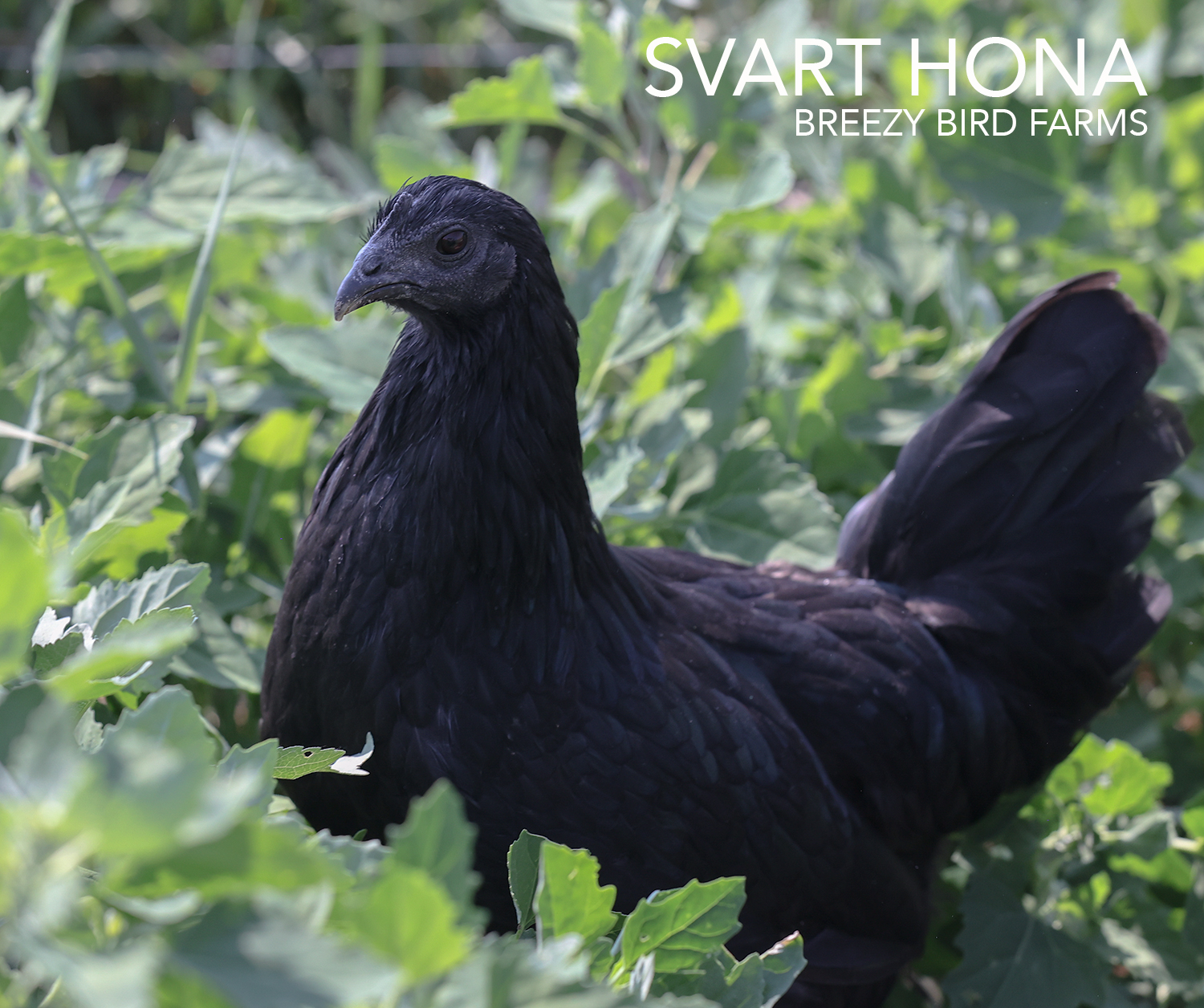
For many years, the Svarthöna was primarily bred for subsistence farming, where farmers selected birds based on their performance in terms of egg production and meat quality. This natural selection process helped maintain the breed's unique characteristics, including its striking black plumage and hardy nature.
Conservation Efforts
In the 20th century, industrialization and the rise of commercial poultry breeds threatened the existence of traditional breeds like the Svarthöna. Recognizing the importance of preserving this unique breed, conservation efforts were initiated to maintain and promote the Svarthöna as a valuable part of Sweden's agricultural heritage. Organizations dedicated to preserving poultry diversity have worked to raise awareness and support for the breed.
Modern Day
Today, the Svarthöna is celebrated not only for its historical significance but also for its culinary qualities. It is gaining popularity among small-scale farmers, homesteaders, and culinary enthusiasts who appreciate its flavorful meat and rich-yolked eggs. Efforts continue to promote the breed as part of sustainable farming practices, highlighting its role in biodiversity and food security.
Size and Weight
Size: The Svarthöna is considered a medium-sized breed. They have a compact and robust body structure, which contributes to their hardiness and adaptability.
Weight: Adult Svarthönas typically weigh around 2.5 to 3.5 kilograms (approximately 5.5 to 7.7 pounds)
Egg Production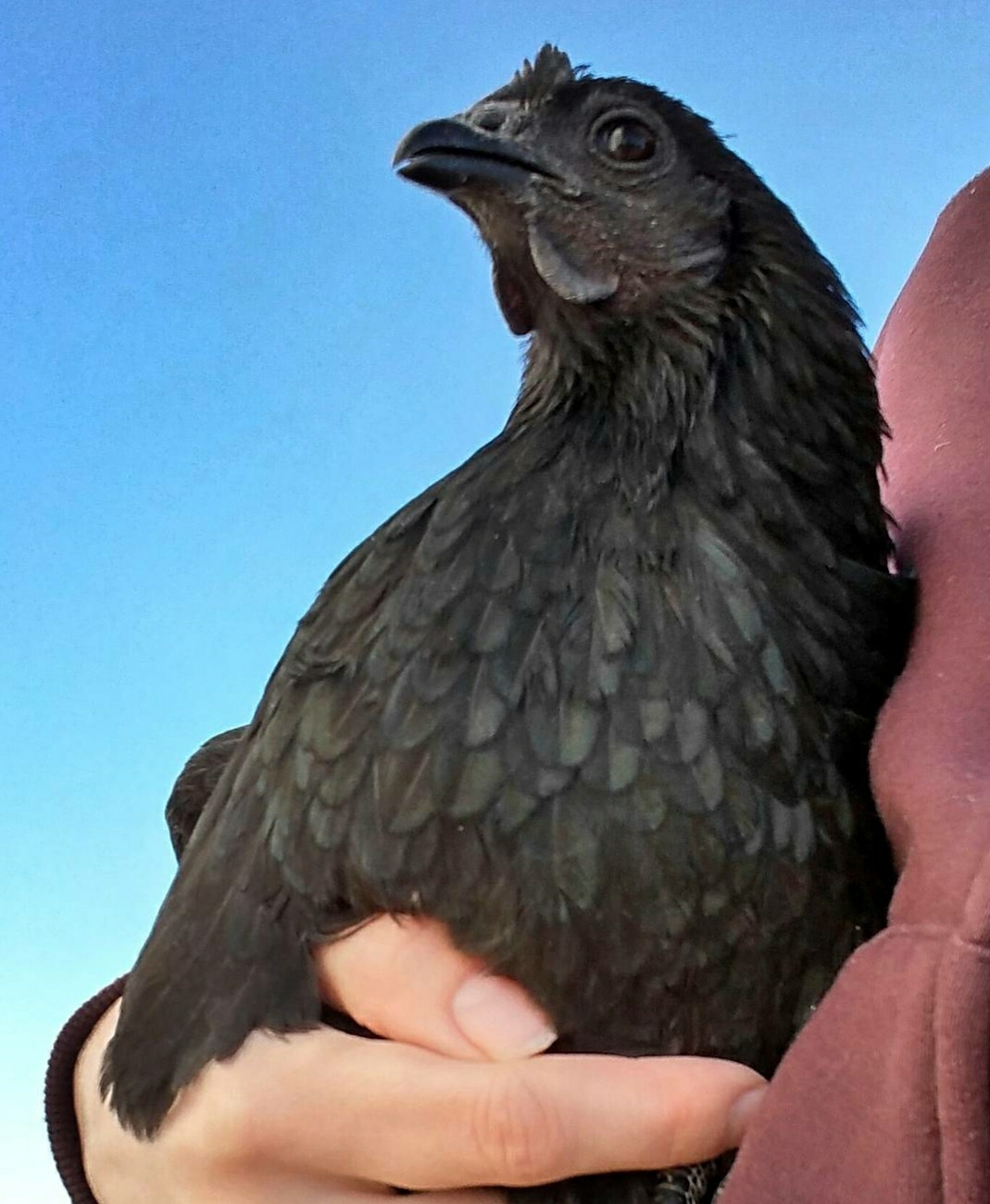
Egg Laying: Svarthönas are known for being good layers, producing a moderate number of eggs. On average, they can lay around 150 to 200 eggs per year.
Egg Size and Color
The eggs are small - medium, with a white/cream shell. The yolks are typically rich and dark, contributing to their appealing flavor.
Temperament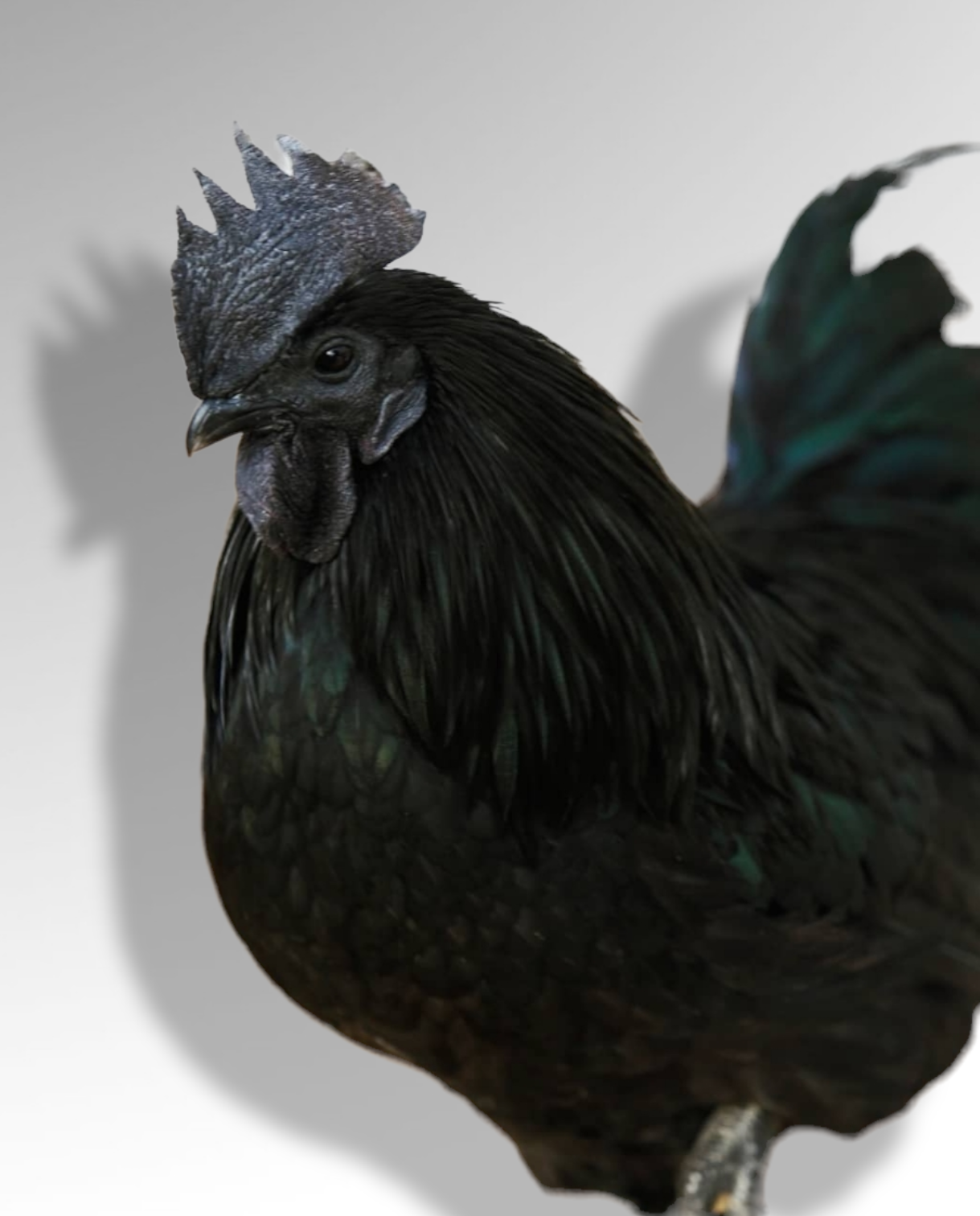
Svarthönas are generally known for their calm and friendly disposition. They are social birds that can adapt well to free-range environments as well as confined spaces. Their gentle nature makes them suitable for family farms and backyard flocks.
Behavior
They are curious and active birds, often engaging in foraging behaviors when allowed outside. Their sociability means they usually get along well with other chickens and can be kept in mixed flocks.
Hardiness
This breed is well-adapted to various climates, making them resilient to colder temperatures. Their hardiness contributes to their popularity among small-scale farmers and homesteaders.
Lifespan
With proper care, Svarthönas can live for several years, often ranging from 5 to 10 years, depending on their living conditions and management practices.
Placement and expression of melanin
The placement and expression of melanin in the Svarthöna (Black Hen) can indeed vary, leading to the presence of different colors in specific areas of the bird. This variability is primarily due to genetic factors and the complexity of how pigmentation manifests in poultry.
Genetic Variation
The Svarthöna, as a landrace breed, exhibits a level of genetic diversity that can result in variations in pigmentation. While the breed is characterized by its overall black coloration, individual birds may express different traits based on their specific genetic makeup. This can lead to variations such as lighter pigmentation in certain areas, like the ear lobes, toes or hackles .
Areas of Variation
While the breed standard may emphasize a uniform black appearance, variations in ear lobe color can result from different genetic backgrounds within the breed. Similarly, colored hackles or patches of feathering in shades other than black may appear due to the expression of different genetic traits. These variations can result from the presence of genes that influence feather color, leading to a mix of black and colored feathers.
Phenotypic Expression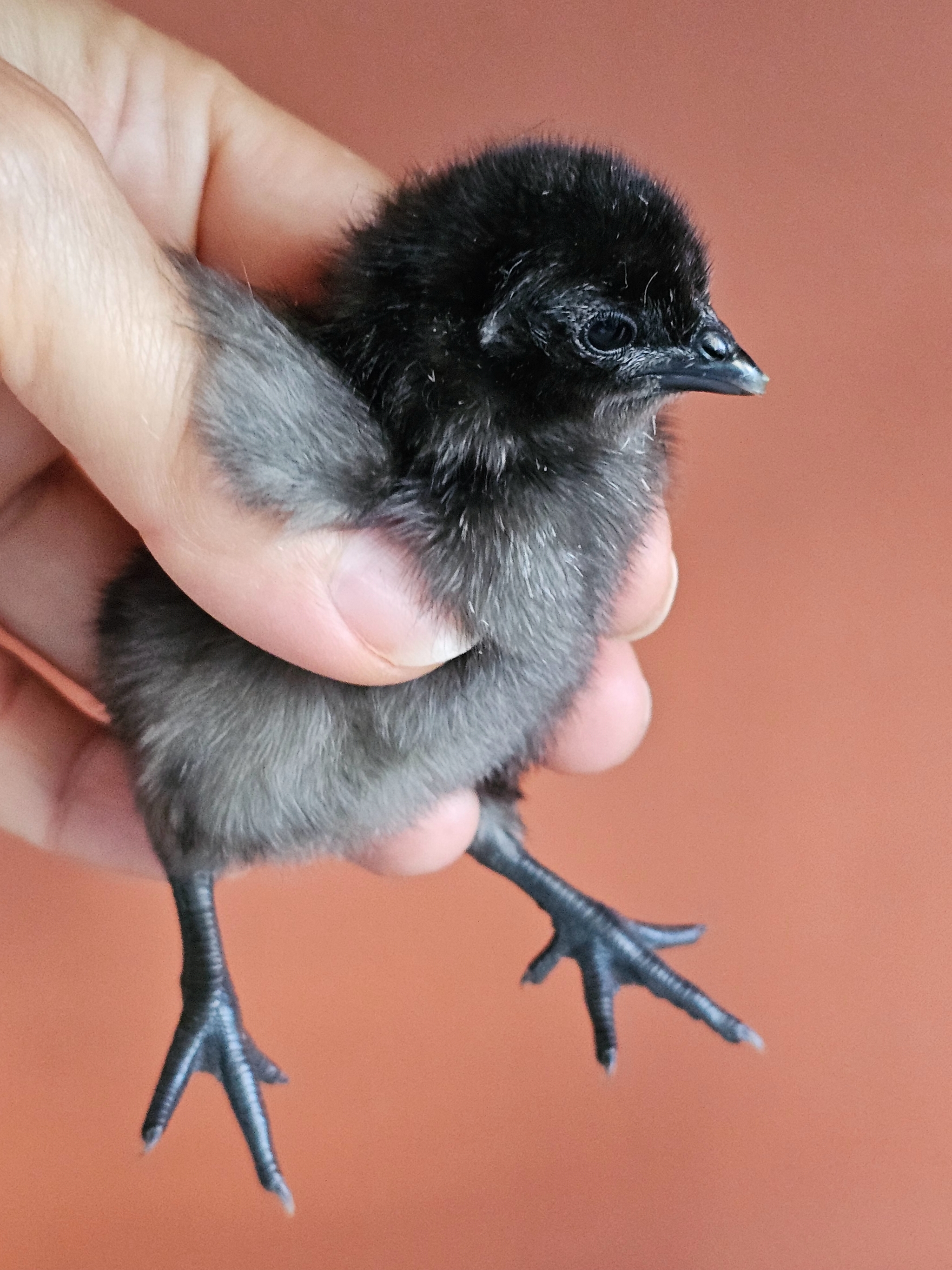
The way genes express themselves in terms of pigmentation is known as phenotypic expression. In some cases, the interaction between multiple genes can create a range of colors and patterns, even within a breed that is primarily known for a specific color. This means that while most Svarthöna may exhibit a solid black appearance, others might show variations depending on their genetic background.
Breeding Practices
Selective breeding practices can also affect the overall appearance of the breed. Farmers and breeders who prioritize specific traits, such as uniformity in color, may inadvertently select against birds with noticeable variations. However, the rich genetic diversity inherent in landrace breeds like the Svarthöna can lead to these interesting color patterns
Cultural Perception
The varying placements of melanin and resultant color patterns can also reflect cultural perceptions and preferences. In some cases, farmers may appreciate these unique traits for their aesthetic appeal or for traditional significance.
Nutritional Profile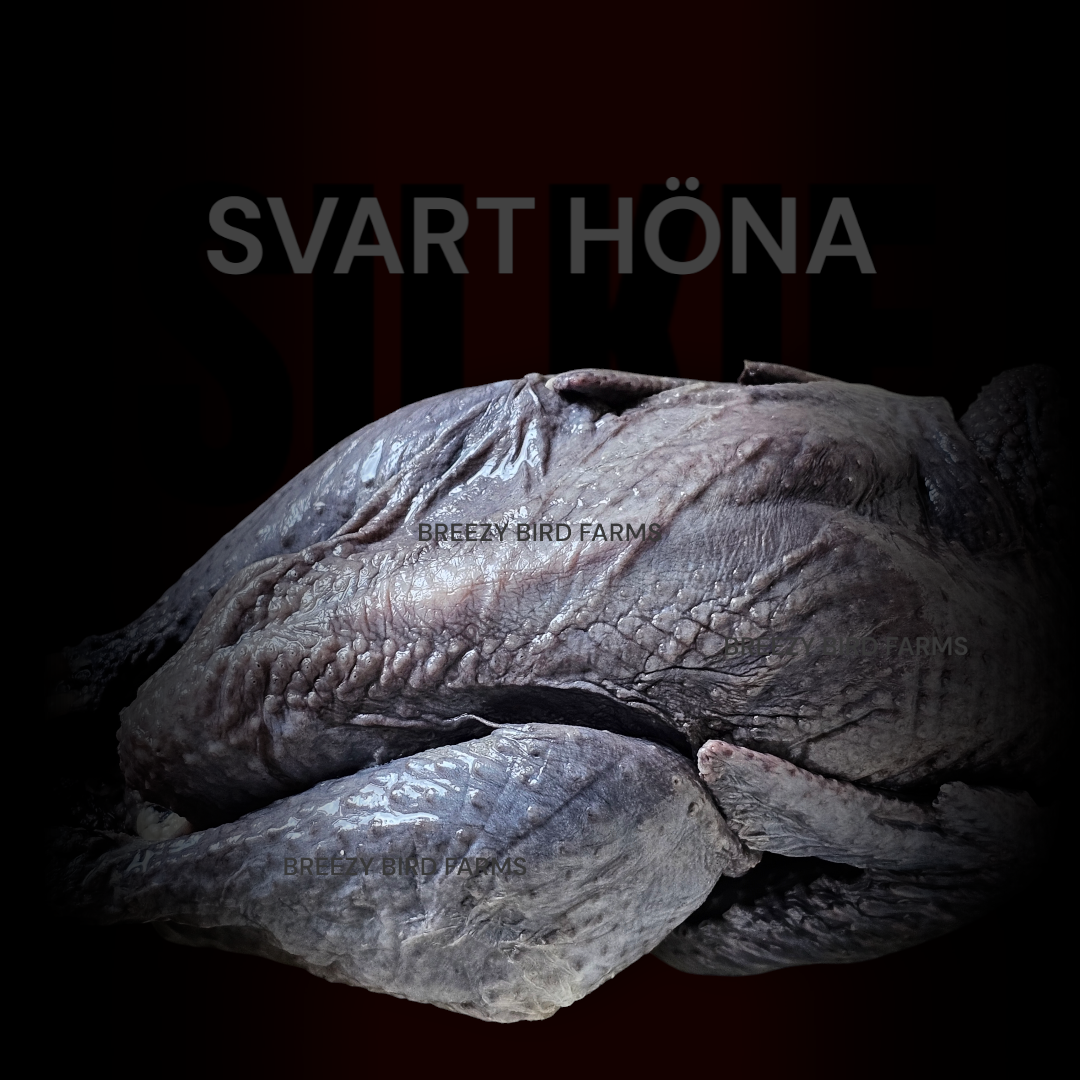
Lean Meat: Svarthönas are typically considered to produce lean meat, which can be a healthier option compared to some commercial breeds that may have higher fat content. Lean meats are generally lower in calories and saturated fats.
Higher Omega-3 Fatty Acids
Some studies suggest that chickens raised on a natural diet, including foraged greens and insects, may have higher levels of omega-3 fatty acids in their meat. This can contribute to heart health and overall wellness.
Rich in Nutrients
The meat from free-range or pasture-raised chickens, like Svarthönas, can be richer in vitamins and minerals, such as vitamin E, vitamin A, and certain B vitamins, due to their diet.
Flavor and Culinary Qualities Unique Flavor
Many people who raise Svarthönas emphasize the rich and flavorful taste of their meat, which is often attributed to the bird's diet and lifestyle. This can make the meat more desirable for culinary purposes.
Cultural Beliefs Traditional Uses
In some cultures, the meat of black chickens, including Svarthönas, is believed to have special properties, such as promoting health and vitality. These beliefs may stem from traditional practices and folklore rather than scientific evidence.